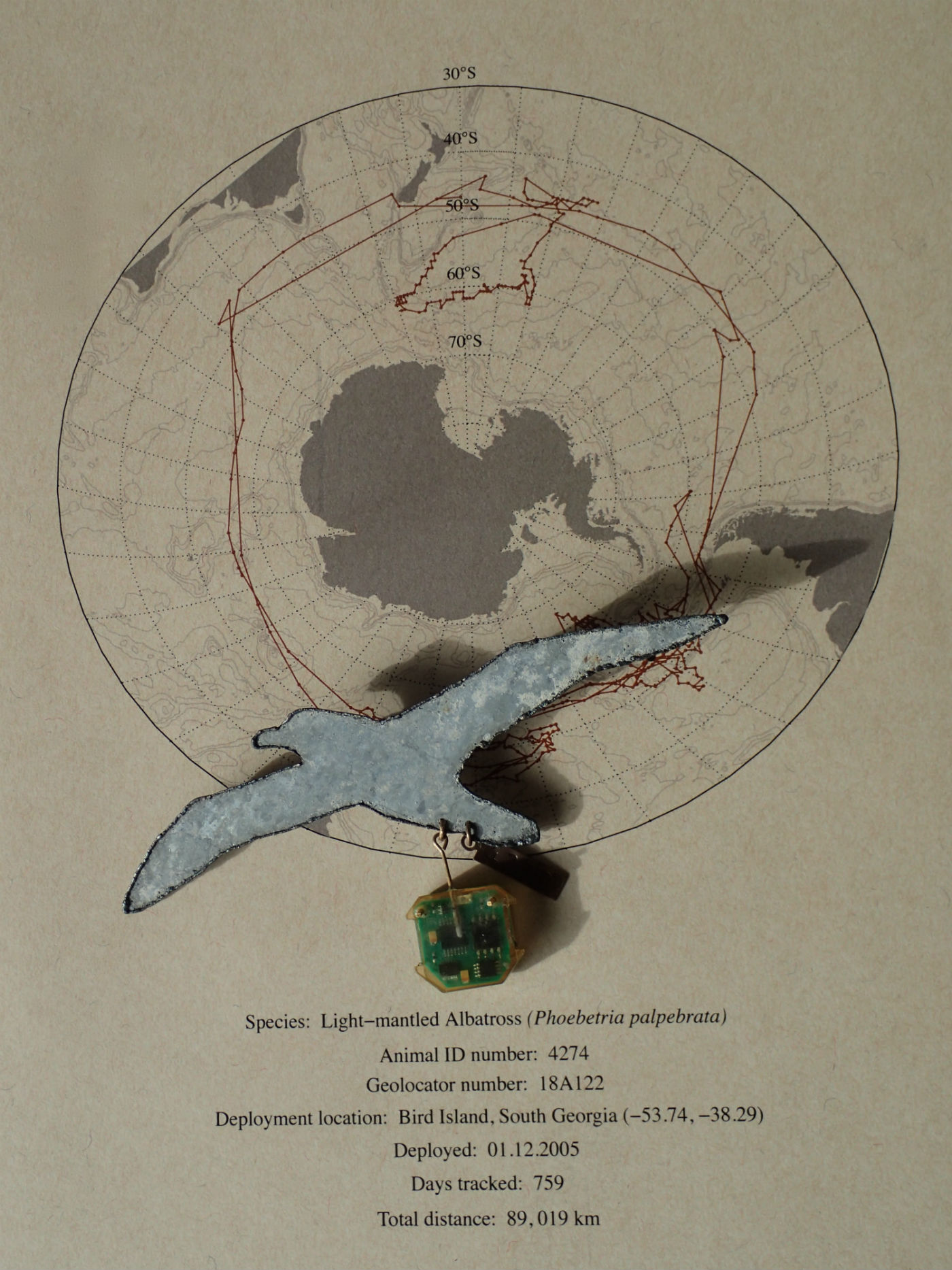Geolocator brooch
Geolocator brooch
This is a brooch made from a geolocator: used for tracking marine predator species. Geolocators are miniature-tracking devices that record ambient light levels, water temperature and time. The data collected by the geolocator reveals the foraging movements of marine top predators, allowing scientists to identify regions of the ocean that are of high ecological significance.
This specific geolocator was attached to the leg of a Light-mantled Albatross (Phoebetria palpebrata) on South Georgia Island and tracked for 759 days. It travelled an incredible 89,019 kilometres. The geolocator was given to me by albatross researcher Jaimie Cleeland. She explained geolocation to me and how the information collected helps to better understand the impacts of changing climate and human activities upon marine predator species. By gaining an understanding of how marine predators use their ocean habitats, more effective management strategies can be put in place for their protection.

Image: Annalise Rees
I was intrigued as I turned the small device over in my hand, revelling in the stories held in its tiny componentry. Through the geolocator I glimpsed a view of the world through the eyes of an albatross soaring above the waves. Jaimie told me that once the batteries in the geolocator go flat they can no longer be used. It sparked an idea that has turned into a project called Geolocation Journeys, supporting marine predator research.
Jaimie and I repurpose these ‘retired’ geolocators transforming them into wearable art. With each piece comes a printed map of the track and the unique identifying number of the bird. This particular brooch also has a silhouette cut from an old metal sign from Casey Station in Antarctica. This brooch signifies the beginning of my friendship with Jaimie and our collaboration. It also presents an alternative approach to communicating scientific data in a meaningful and engaging way. Pinned onto coats and jackets the geolocators go on new journeys opening up our eyes, minds and hearts to help share the amazing stories of these unique species and their habitat.
It is my hope that through this small object I, too, can help Jaimie and her researcher colleagues to better understand how we can make positive changes to protect these animals and the environment for which we are all custodians.
Project collaborators: Annalise Rees, Hanne Nielsen, Jaimie Cleeland and Elizabeth Leane

